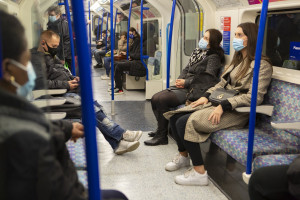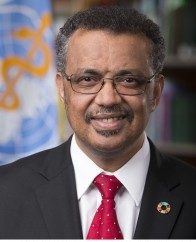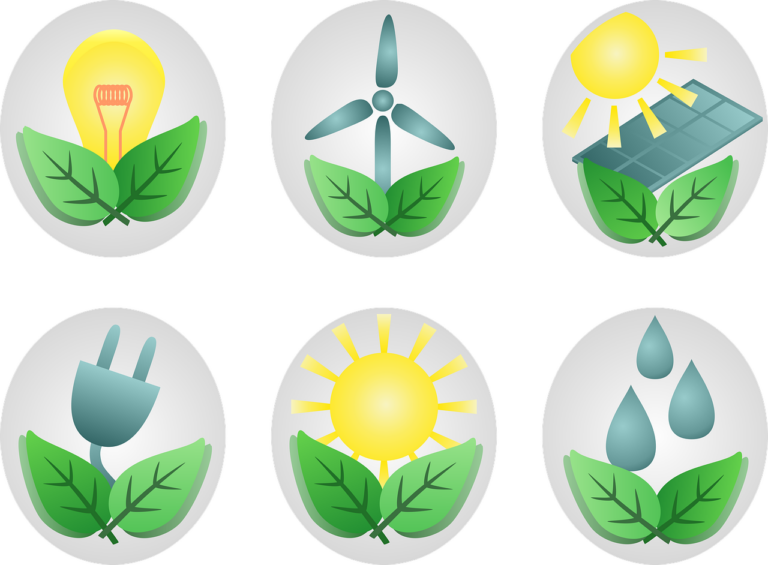

By Dr Tedros Adhanom Ghebreyesus*
None of us would have imagined we would now be entering the third year of the pandemic. I’m sure two years ago when we were all coming to grips with the spread of this new virus, none of us would have imagined we would now be entering the third year of the pandemic. So when will it end? Is it ending now? That’s one of the major questions being asked.
Indeed, high vaccine coverage in some countries, combined with the lower severity of Omicron, is driving a dangerous narrative that the pandemic is over.
But it’s not – not when 70 thousand people a week are dying from a preventable and treatable disease; Not when 83% of the population of Africa is yet to receive a single dose of vaccine; Not when health systems continue to strain and crack under the caseload; Not when we have a highly transmissible virus circulating almost unchecked, with too little surveillance to track its evolution.
In fact, the conditions are ideal for more transmissible, more dangerous variants to emerge. But we can end the pandemic as a global health emergency this year. We have the tools. We have the know-how. In particular, we are calling on all countries to fill the urgent financing gap of US$ 16 billion for the ACT Accelerator, to make vaccines, tests, treatments and PPE available everywhere.
Compared with the costs of another year of economic turmoil, 16 billion dollars is frankly peanuts. And some finance ministers called it a rounding error to the money they are losing due to the pandemic. Ending this pandemic must remain our focus. At the same time, we must learn the lessons it is teaching us.
There have been many reviews of the global response to this pandemic, with more than 200 recommendations. Taking those recommendations into account, last month WHO’s Executive Board tasked me with developing a set of proposals on strengthening the global architecture for pandemic prevention, preparedness and response, to be considered by all Member States at the World Health Assembly in May.
In brief, I see three key pillars of that architecture.
First, we need stronger governance. Instead of the confusion and incoherence that has fueled this pandemic, we need cooperation and collaboration in the face of common threats, that can address the trust deficit that we have seen.
At a Special Session of the World Health Assembly at the end of last year, WHO’s 194 Member States agreed to negotiate a new legally-binding instrument, to set the rules of the game for pandemic prevention, preparedness and response.
WHO also supports the recommendation for a heads of state council, to provide high-level political leadership for rapid and coordinated action. In our view, such a council must be anchored in the constitutional mandate of WHO, to ensure political, strategic and technical coherence.
Second, we need stronger systems and tools to prevent, detect, and respond rapidly to epidemics and pandemics.
Already, WHO has taken steps to build some of these systems and tools, including the WHO Hub for Pandemic and Epidemic Intelligence in Berlin, to enhance global surveillance through collaborative intelligence; We’re piloting the WHO BioHub System, a new mechanism for countries to share novel biological materials; Several countries are now piloting the Universal Health and Preparedness Review, a new peer-review mechanism for enhancing national preparedness; We established the ACT Accelerator, which has given us valuable experience and insights into how to fast-track equitable access to countermeasures; And to strengthen capacities for local production of vaccines and other health products in low- and middle-income countries, we have established the WHO Technology Transfer Hub in South Africa, which has now developed its own mRNA COVID-19 vaccine candidate.
Today we announced the first six African countries to receive technology from the hub to produce their own mRNA vaccines: Egypt, Kenya, Nigeria, Senegal, South Africa and Tunisia. But above all, not only the systems and tools, the central point will be developing the workforce. And that is why we are building the WHO Academy in Lyon, France.
And third, we need stronger financing.
It’s obvious that nationally and globally, we need substantial resources for strengthening global health security. Our analysis estimates the needs at US$ 31 billion per year.
We estimate that about US$20 billion could come from existing and projected domestic and international resources, leaving a gap of US$ 10 billion per year.
To close the gap for the most essential functions – such as surveillance, research and market-shaping for countermeasures – we support the idea of a new dedicated financing facility, anchored in, and directed by, WHO’s constitutional mandate, inclusive governance and technical expertise.
Any efforts to strengthen the global health security architecture can only succeed if they also strengthen WHO’s role at its centre, rather than creating further mechanisms that would only create further fragmentation and potentially leave the world less safe.
We especially appreciate Germany’s leadership of the Member States Working Group on Sustainable Financing, and we look forward to our continuing discussion with our Member States on ensuring WHO has the resources to meet the world’s expectations of it, as well as the accountability for delivering against those expectations.
Let me return to the question I asked at the beginning. When will the pandemic end?
It will end when we choose to end it. Because ultimately, it’s not a matter of chance, it’s a matter of choice.
*Edited version of the WHO Director-General’s remarks at the Munich Security Conference on February 18, 2022





